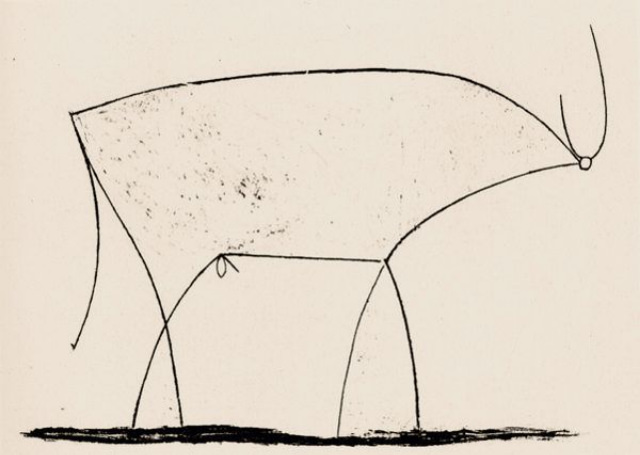“The Bull” is a series of eleven lithographs created by Pablo Picasso in 1945. The series depicts a bull in various forms and positions, showcasing Picasso’s mastery of line, form, and movement. This series is considered one of Picasso’s most important works of the 1940s and is considered a masterpiece of modern art. The series was created using a technique known as “pointillé,” where individual dots of color are used to build up a picture. This gives the images a unique and recognizable look, making them instantly recognizable as Picasso work. “The Bull” series remains a popular and widely recognized work of modern art, and continues to be displayed in museums and galleries around the world.
#1 Plate 1: To start the series, Picasso creates a lively and realistic brush drawing of the bull in lithographic ink.
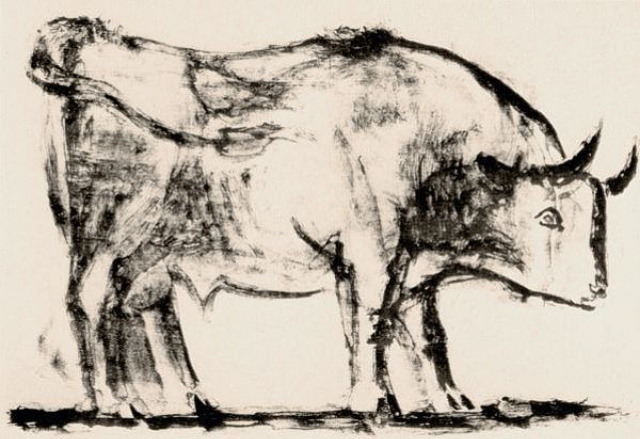
It is a fresh and spontaneous image that lays the foundations for the developments to come. Picasso used the bull as a metaphor throughout his artwork but he refused to be pinned down as to its meaning. Depending on its context, it has been interpreted in various ways: as a representation of the Spanish people; as a comment on fascism and brutality; as a symbol of virility; or as a reflection of Picasso’s self image.
#2 Plate 2: At the second stage of the lithograph, Picasso bulks up the form of the bull to increase its expressive power and achieve a more mythical presence.
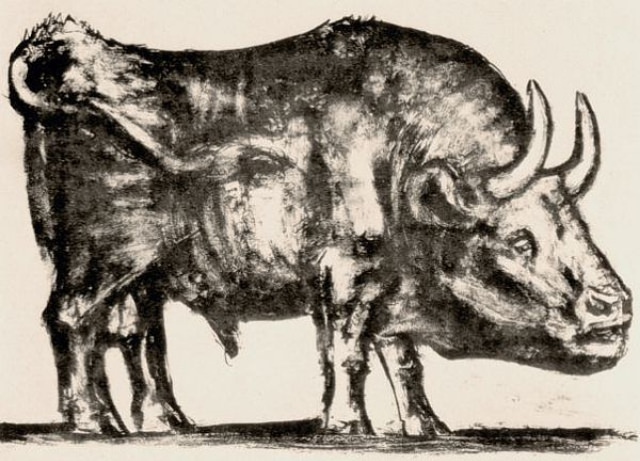
#3 Plate 3: On Plate 3, the development takes a change of direction.
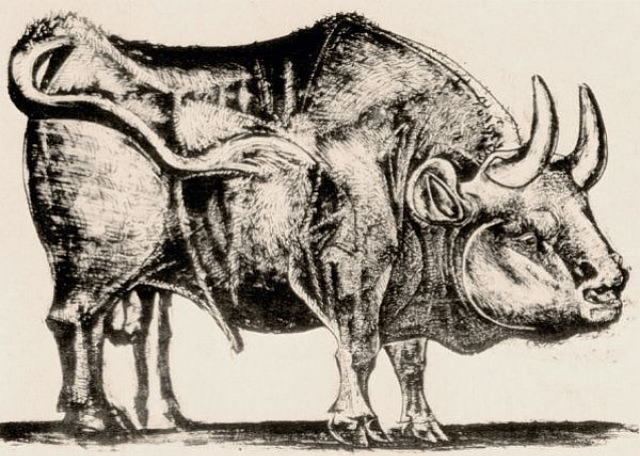
Picasso stops building the beast and starts to dissect the creature with lines of force that follow the contours of its muscles and skeleton. He cuts into the form of the bull much in the same way as a butcher would cut up a carcass. In fact, he was known to have joked with the printers about this butcher analogy. Also at this stage, Picasso introduces the use of a lithographic crayon to add more detail to the surface texture of the animal’s skin. The overall effect is reminiscent of Dürer’s famous image of a rhinoceros.
#4 Plate 4: Plate 4 sees the artist start to abstract the structure of the bull by simplifying and outlining the major planes of its anatomy.
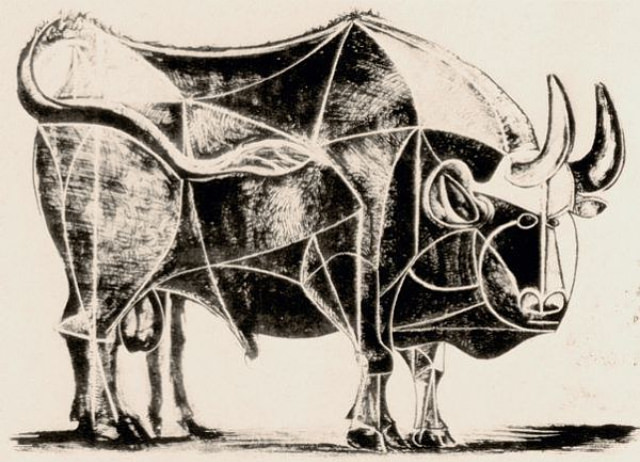
Ten years earlier Picasso had said that, “A picture used to be a sum of additions. In my case a picture is a sum of destructions.” In view of this statement, lithography seems to be the most natural choice of media for this series of prints. One of the technical advantages of lithography over other printmaking techniques is that you can both add to and subtract from the image with relative ease.
#5 Plate 5: The simplification and stylization of the image continues on Plate 5.
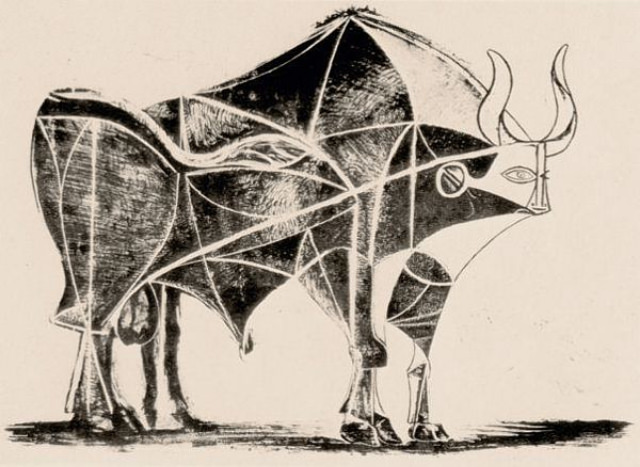
Picasso starts to erase sections of the bull in order to redistribute the balance and reorganize the dynamics between the front and the rear of the creature.
#6 Plate 6: At this stage, another new head and tail are created to conform to the style and direction of the developing image.
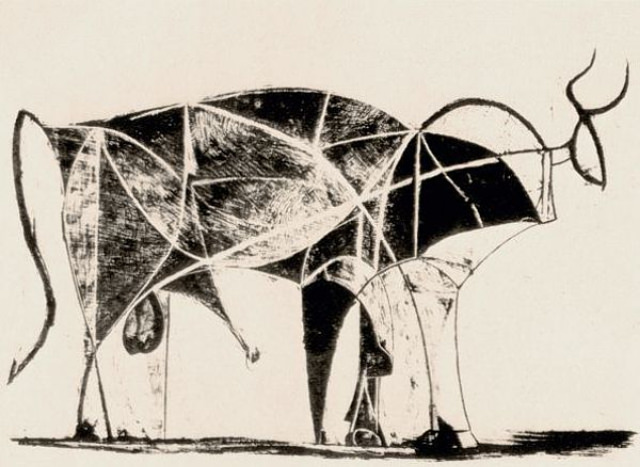
Picasso introduces more curves to soften the network of lines that crisscross the creature. Once again he adjusts the line of the back which now begins as wave on the shoulders and flows like a pulse of energy along the length of its body. The two counterbalancing lines discussed in the previous plate are extended down the front and back legs to act like structural supports for the weight of the bull. All three of these lines intersect at a point that suggests the bull’s centre of balance. Through the development of these drawings, Picasso is beginning to understand the displacement of weight and balance between the front and rear of the animal.
#7 Plate 7: As Picasso recognizes the balance of form in the bull, he starts to remove and simplify some of the lines of construction that have served their function.
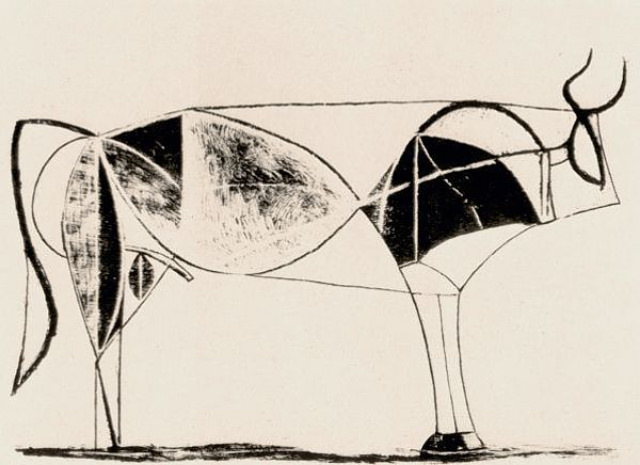
He then encases the essential elements that remain in a taut outline.
#8 Plate 8: Plate 8 continues the reduction and simplification of the image into line with another reconfiguration of the head, legs and tail.
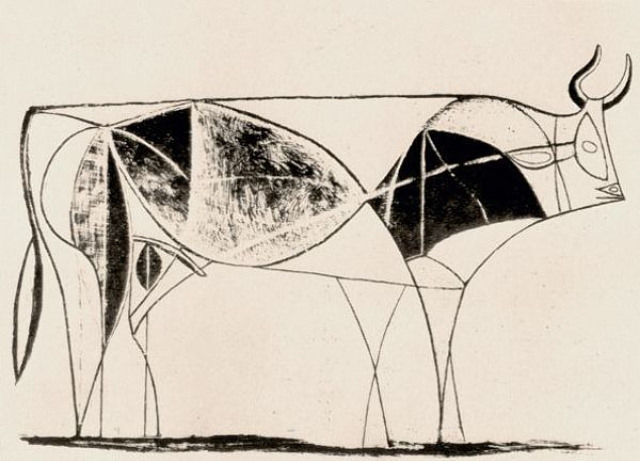
#9 Plate 9: While continuing to have fun with the drawing of the head, Picasso now erases the remaining areas of tone and finally reduces the bull to a line drawing.
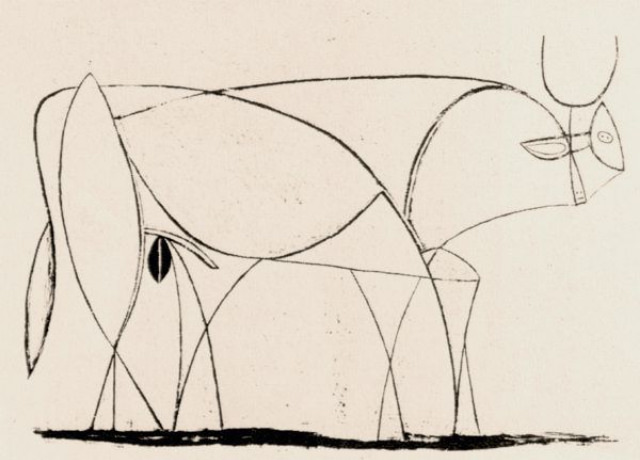
Only the creature's reproductive organ retains its shading in order to emphasize its gender.
#10 Plate 10: At this penultimate stage, the more complex areas of the line drawing are removed to leave only a few basic lines and shapes that characterize the fundamental forces and correlation of forms in the creature.
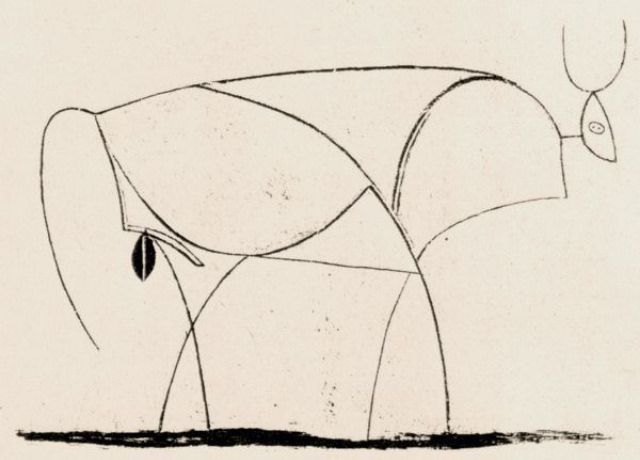
#11 Plate 11: In the final print of the series, Picasso reduces the bull to a simple outline which is so carefully considered through the progressive development of each image, that it captures the absolute essence of the creature in as concise an image as possible.
